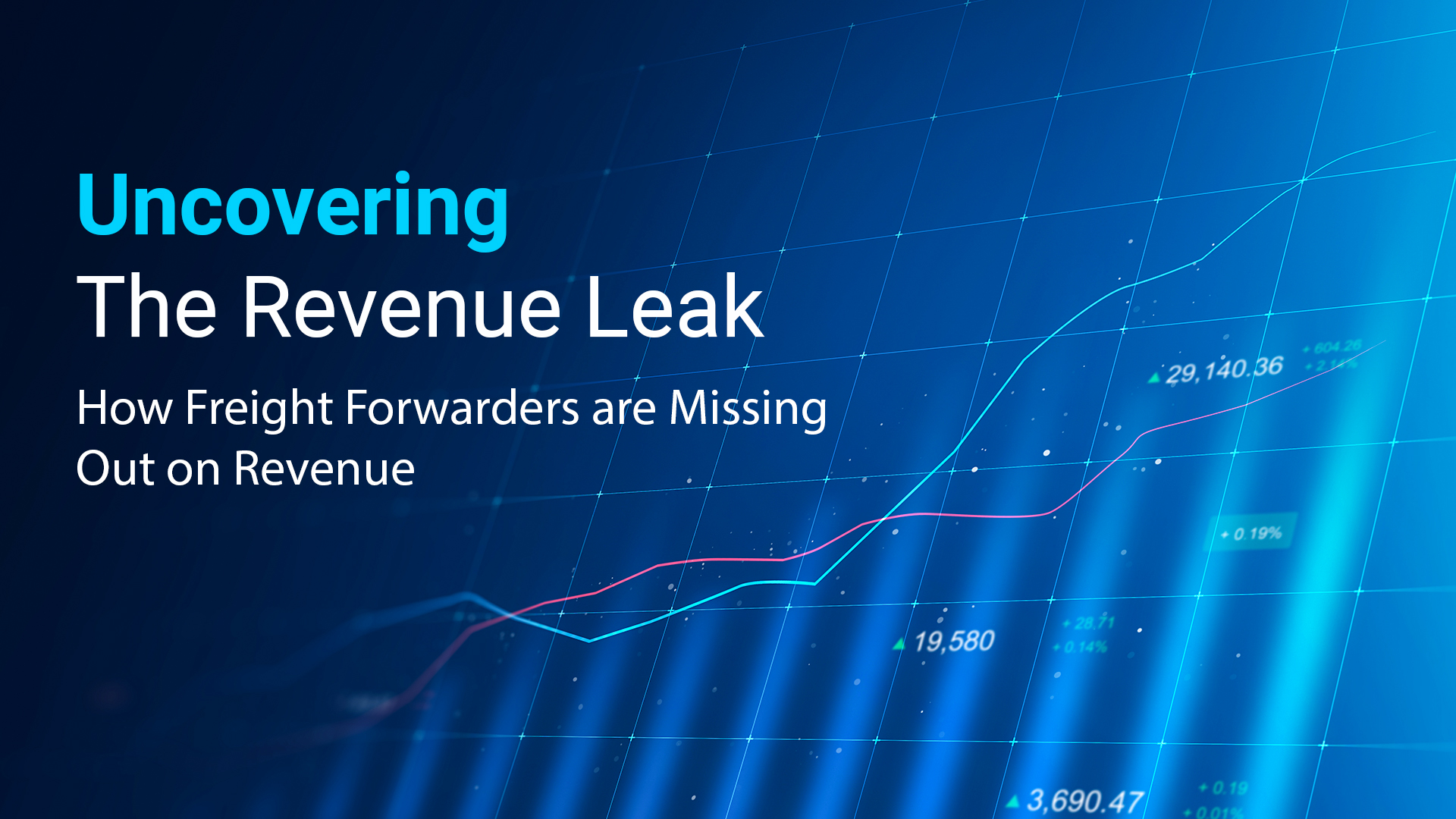What’s in the Article?
- Deflection from old school principles
- What is Visibility?
- How can you outperform your competitors through visibility?
a. Know your customers better
b. Attain operational efficiency
c. Make educated and quick decisions
d. Align teams with an agile supply chain
e. Identify the competitive edge and enhance it
Deflection from Old School Principles
Standing out from the crowd and finding a USP has always been a point of necessity for businesses, irrespective of the industry they operate in.
Old school management strategies would urge businesses to cut costs to increase profits or cut sales prices to penetrate the market and increase customer share.
Other traditional techniques would be to expand into other markets or create additional products or sources of revenue.
However, this could potentially deviate businesses from their core goals and confuse their visions.
Unfortunately, these thought processes are far-flung and ill-equipped for today’s digital market.
Technology-enabled and data-driven strategies are the way forward to garner attention and customers.
What is Visibility?
In simple terminology, Visibility is having the ability to know the accurate and real-time status or progress of all aspects of a business, thereby enabling operational and financial efficiency.
Using a combination of artificial intelligence, data analysis, prediction monitoring, and the internet of things, logistics providers aim to collect and correlate information that provides visibility around various nodes of the supply chain.
This information helps organizations become aware of their performance and disruptions, likewise.
When data is transparent across the network, decisions are effective, and the risk is minimized.
During the pandemic, volatility heightened.
As a direct result of this, almost 57% of organizations have attempted to increase their use of technology for supply chain mapping through technology tools to facilitate visibility and empower decision-makers.
Unfortunately, the visibility levels are still low in the supply chain industry.
Only 6% of companies report full visibility of their supply chain. 69% of companies do not have total visibility.
This is an evolving field that has immense potential.
How can you outperform your competitors through visibility?
1. Know your customers better
Visibility comes in a variety of methods.
It is not used just to identify one’s performance or the market’s disruptions; it can also be used to understand the customer’s perspectives more meaningfully.
The current generation of consumers expects to be treated like royalty.
They demand personalized attention and have very specific wants. Hence, it is only right to put visibility to use to identify what your customers want and whether they are currently receiving the service they expect.
This could be done through a variety of methods – from primary research via surveys and quizzes to monitoring customer feedback through sentiment analysis.
The primary aim would be to communicate clearly that your logistics brand is here to cater to their needs.
At the same time, all operations should be steered towards this goal and act on meeting customer expectations. The ultimate goal should be to make the consumer feel empowered, heard, and acknowledged.
This will help retain customers and gain loyalty as a Salesforce study identified that 89 to 93% of customers who have had a positive customer service experience are more likely to make another purchase.
Did you know that a 5% increase in customer retention produces more than a 25% increase in profit?
2. Attain operational efficiency
According to a PwC estimate, a 10% to 30% increase in efficiency in the EU logistics sector would translate into €100-300 billion in cost savings for the European industry.
Similarly, becoming operationally efficient within the business will result in increased profits, reduced costs, eliminate risks, and enhanced productivity, ultimately outperforming competitors.
One foolproof way of attaining operational efficiency is through the visibility spectrum.
Having knowledge and accurate information about supply chain disruptions or potential blockages can help identify where improvement is required.
Further, with the use of artificial intelligence or predictive analytics, a logistics company can re-align its operations with trusted measures for improved efficiency.
For example, imagine knowing upfront that container availability is diminishing and being able to track the status of all available containers worldwide.
This quantum of precise information can help supply chain associates build mitigating schemes that will identify a personalized and feasible transport plan for their partners.
It is common knowledge that supply chain volatility is unpredictable and intensive.
Hence, being able to implement and streamline alternative strategies for operational efficiency is key.
Further, common KPIs like on-time deliveries, average wait time, customer conversion rations, and order accuracy can be monitored and tracked through visibility.
Aiming to better these KPIs will drive home more operational efficiency.
3. Make educated and quick decisions
Arguably, the most valuable benefit that arises from visibility is the ability to make decisions with an educated outlook and in a quick manner.
This is possible only when the data that has been assimilated through various visibility tools is readily available and easily comprehendible.
Decision-making does not only entail taking corrective actions.
It also encompasses larger policy and organizational level conclusions that direct the future of a company.
There are a million questions that the management requires answers to for them to build a better business.
Usually, in a data analysis model, visibility is achieved when supply chain associates are able to read and absorb multitudes of data that was collected.
This data is provided in the form of charts, images, and reports through data-presentation tools.
The sole purpose of such detailing is to ensure that smart conclusions can be drawn and executed – thereby strengthening the decision-making process.
Imagine identifying that certain days are black-out dates beforehand through data mining.
This will help associates schedule the required shipments more effectively.
Similarly, imagine identifying that a container is moving towards an incorrect destination. This helps the management reschedule a reverse pick-up or change the route and make amends immediately.
All these decisions were made possible only because data was easily available and heightened visibility.
4. Align teams with an agile supply chain
According to Quickbase’s recent Supply Chain Resiliency Survey, companies are being compelled to react to unexpected changes in the supply chain on a weekly (43%) and daily (36%) basis.
Speed and skill are important when teams react to such disruptions – and visibility aids a more aligned and agile supply chain process.
Logistics companies comprise multiple departments, which are interlinked and interdependent.
All these teams must work in tandem to ensure that goals are met. For such a complicated process to remain balanced, the information around visibility needs to be transparently communicated as the single source of truth, and all teams should be aligned with the available data.
Data collected through visibility can be cascaded to all teams, making them aware of the situation in real-time.
This reduces arguments, eliminates blame games, and increases harmony and synergy. One of the most obvious causes of bottlenecks and process breakdowns is the lack of consistency and synchronization.
Further, not only should teams remain aligned; even the data analyzed needs to be through consistent data models, for example, via APIs and blockchains.
While teams remain united, it is also important for them to acknowledge the fact that they need to remain agile and adaptive to the various market dynamics that spruce up the supply chain process.
5. Identify the competitive edge and enhance it
Outperforming competition in the 21st century works effectively when competitive edges are identified and capitalized on.
Differentiating oneself from the regular and mainstream businesses helps you stand out and share your success story better.
Customers look for companies that are aware of their specialty and take extra steps to enhance it.
KPIs or metrics can be monitored over periods and can be used to identify your differential strategy.
Once identified, forecasting tools can be utilized to find additional information that would help enhance the competitive edge.
For example, a logistics business could discover its competitive edge lies in providing and promising 100% on-time deliveries across the most optimized routes. Of course, this benefit would come at a premium price.
However, the cargo reaches faster than usual and will always meet its ETA.
A customer who needs and prioritizes this premise will choose this offering. Using visibility tools and predictive analysis, it will be possible to identify the shortest route with the least disruptions and maintain efficacy through constant monitoring.
Further, as 57% of companies believe that supply chain management gives them a competitive edge, they will look to partner with supply chain solution providers who can propel them towards this advantage.
Conclusion
By 2025, the average spending for SCM software for employees will likely average $8.08.
While the human factor will not be replaced altogether, technology is used to augment human interactions and facilitate better management.
Embracing technology is the need of the hour, as thousands of companies are upskilling and upscaling their business to be able to integrate suitable technology solutions that drive home operation efficiencies, cost reductions, risk identification, issue resolutions, and automated forecasting.













